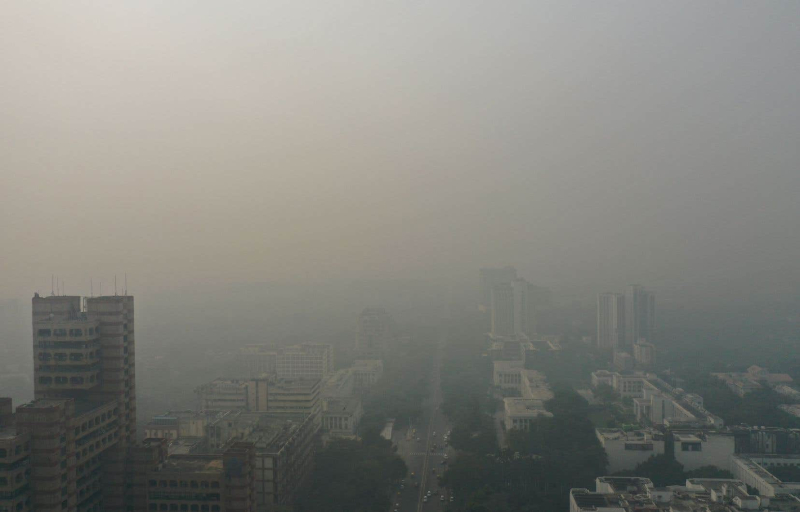
Shubham Koul Agence France-Presse New Delhi is regularly ranked the most polluted capital in the world.
New Delhi wants to seed clouds to make rain and chase away the toxic fog that smothers it every fall, a controversial technique that environmental advocates say does not address the root causes of the problem.
< p>The idea of local authorities is to spray common salt or a mixture of salts into the clouds to trigger condensation in the form of rain.
“Even very modest rain is effective in reducing the pollution,” says Sachchida Nand Tripathi, professor of sustainable energy engineering at the Indian Institute of Technology (IIT) in Kanpur (North), at the origin of the project.
Also read
- Greenhouse gas concentrations have reached an unprecedented level in 2022
- Pakistani students will have to wear masks in class due to pollution
- Predicting the impact of climate change on air quality
The megalopolis of 30 million inhabitants is regularly ranked the most polluted capital in the world, with levels of PM2.5 — microparticles that enter the blood system through the lungs — regularly more than 30 times higher than the World Health Organization ceilings. health (WHO).
But breathing toxic air has catastrophic consequences on health. According to the WHO, prolonged exposure can trigger stroke, heart disease, lung cancer and respiratory diseases.
The average New Delhi resident loses 12 years of life to air pollution, according to a study published in August by the Energy Policy Institute at the University of Chicago.
Authorities had to temporarily close schools in the capital, ban construction sites and ban diesel vehicles during recent pollution peaks.
Needless spending?
But given the lack of effect of these measures, the government asked the Kanpur Institute of Technology to prepare to seed clouds, by plane or using cannons.
According to M .Tripathi, this technique is effective and “has shown no negative effects wherever it has been tried.”
But the high price and doubts about the effectiveness of the method are raising eyebrows among observers.
While the exact cost has not been made public, Indian media report the sum of 10 million rupees (approximately $120,000 or 110,000 euros) for an area of 100 square kilometers.
p>
For environmental expert Bhavreen Kandhari, this is an “ineffective approach” to pollution. “We risk spending public funds unnecessarily and wasting precious time,” she told AFP.
New Delhi's pollution is caused by a mix of carbon dioxide emissions. factories and vehicles, exacerbated by seasonal fires caused by farmers in surrounding areas.
The phenomenon gets even worse in autumn and winter, when colder air traps pollution. Residents of the capital are then advised to constantly wear masks outside.
“Ephemeral respite”
India is not not the first to use this technique.
China regularly spends billions of dollars trying to modify weather conditions to protect agricultural regions or improve air quality before major events.
Scientists in western India have also tested it successfully, achieving a 20 percent increase in rainfall, says Tripathi.
But Sunil Dahiya, an analyst at the Center for Research on energy and air purity (CREA), believes that artificial rain is not a “final solution” to pollution.
“The respite is ephemeral, because as soon as the rains stops, polluted air masses arrive, quickly reducing air quality to dangerous levels.” Emissions must be reduced at source “for lasting and significant improvements in air quality”, insists expert.
For Professor Tripathi, cloud seeding “is worth it to be tried”, especially since other measures have failed.
New Delhi tried another experiment two years ago: a “smog tower”, a giant fan supposed to suck and clean the air. But this structure costing some two million dollars (1.8 million euros) only operated over a radius limited to 50 meters and was abandoned.

